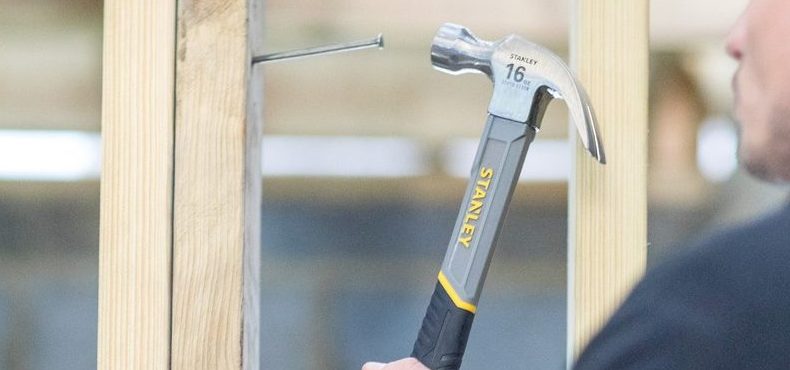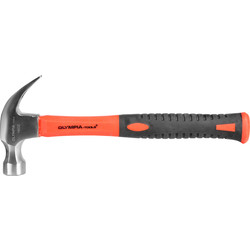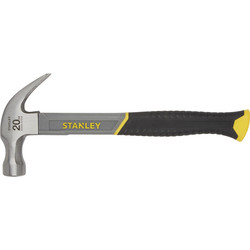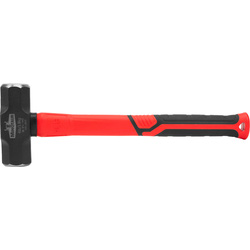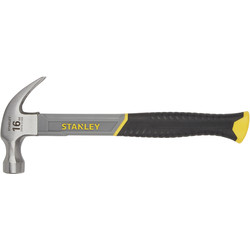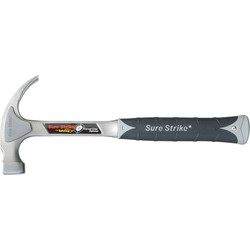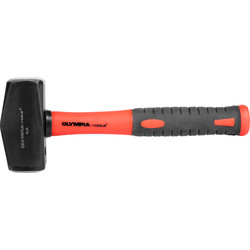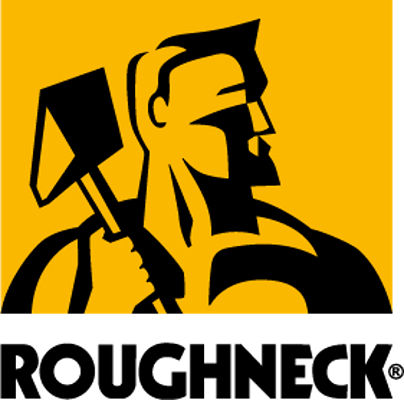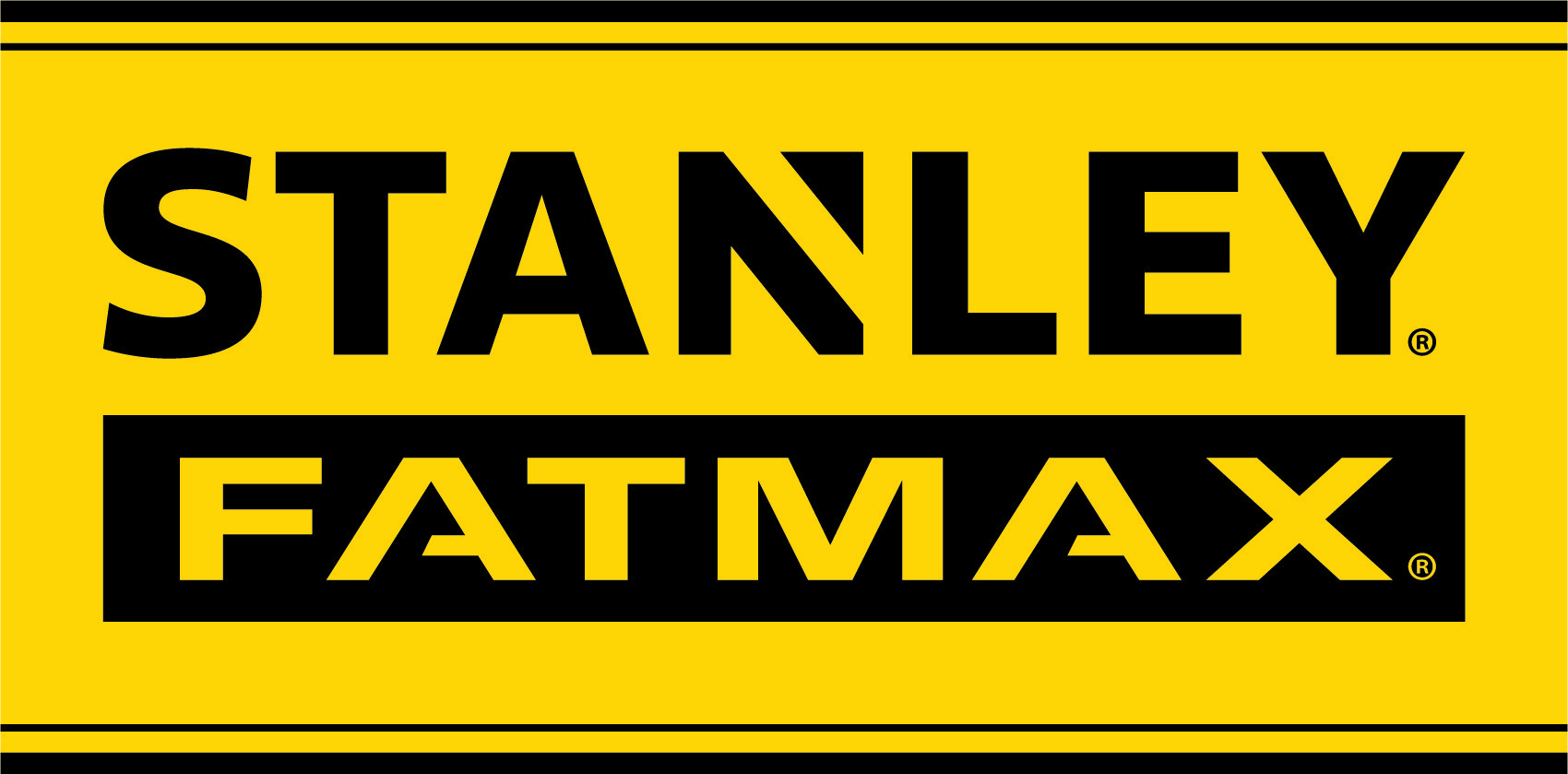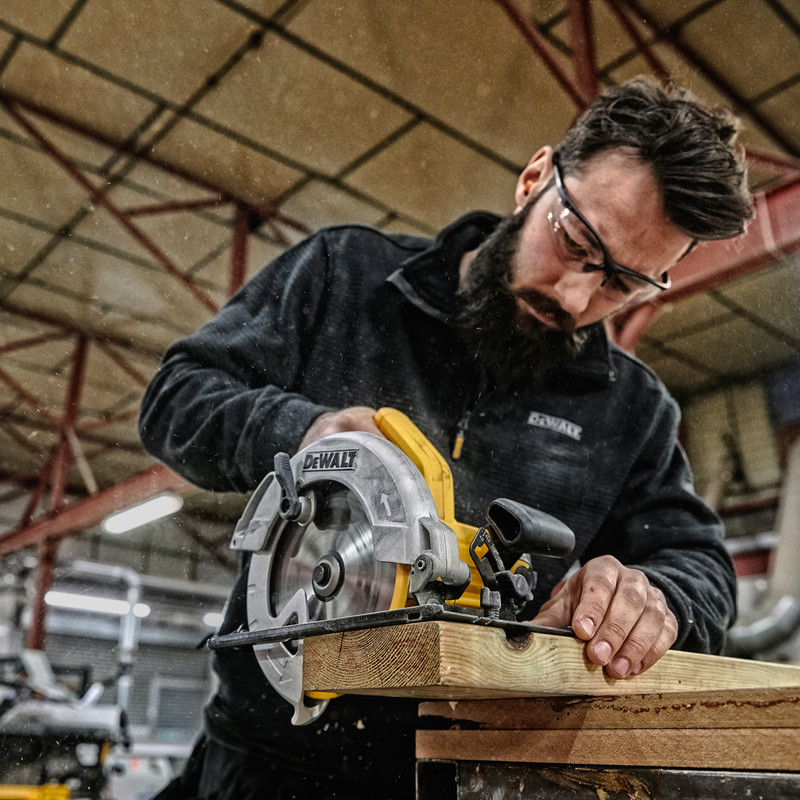Hammers are among one of the first hand tools most people buy, and the hammer may even be the oldest tool of all time. They’re versatile, relatively inexpensive and are useful in just about anyone’s toolkit.
Whether you’re a DIYer, slater, carpenter, joiner or electrician, there’ll be a hammer for you. Consider how long you’re likely to use the hammer for at one time, whether there’ll be electricity around you, your budget, and even the weight you’re able to lift.
Remember that whatever type of hammer you choose for your job, you should always wear eye protection and consider other PPE like gloves for hand protection and protective footwear with toe caps if using longer striking tools like sledge hammers.
The Parts of a Hammer
Every hammer has three main parts: the handle, the head, and the eye. These three parts work together to make a tool suited to a wide range of jobs.
The handle provides a grip for swinging the hammer safely and effectively, the head is the component that strikes the fastener or work surface, and the eye is the opening where the handle and head are securely joined together.
The handle and the head can be made of a number of different materials which make them better or less suited to various projects. Common handle materials include wood, fibreglass and steel. You’ll find hammer heads are most commonly made of steel, but can also be made of wood or rubber.
Types of Hammer

Claw Hammers
Claw hammers are versatile, with a powerful striking head and a V-shaped claw to remove nails. They come in various types, including curved claw or ripping claw. Both of these types look very similar, but a rip-claw (also known as a framing hammer) has a straighter claw and is often heavier. You’ll find claw hammers are particularly valuable for carpentry, framing, and woodworking projects.
Claw hammers are versatile, able to be used in both nail driving and removal tasks. They are also widely used and readily available, so you’ll always find a claw hammer within your budget. Precision sets claw hammers above the rest – the claw provides excellent leverage for removing nails without causing damage to the material.
Claw hammers may not be ideal for heavy-duty demolition tasks because they’re relatively lightweight. Additionally, the design of each claw hammer is very similar – so there is limited variety for specialised needs. When it comes to substantial demolition or jobs that need more power, specialised hammers like sledgehammers may be more effective.
Advantages
-
Versatile
-
Widely and readily available at any budget
-
Precise
Things to Consider
-
Less suited to heavy-duty demolition
-
Little variety between models
-
Specialist hammers may be better suited to some jobs
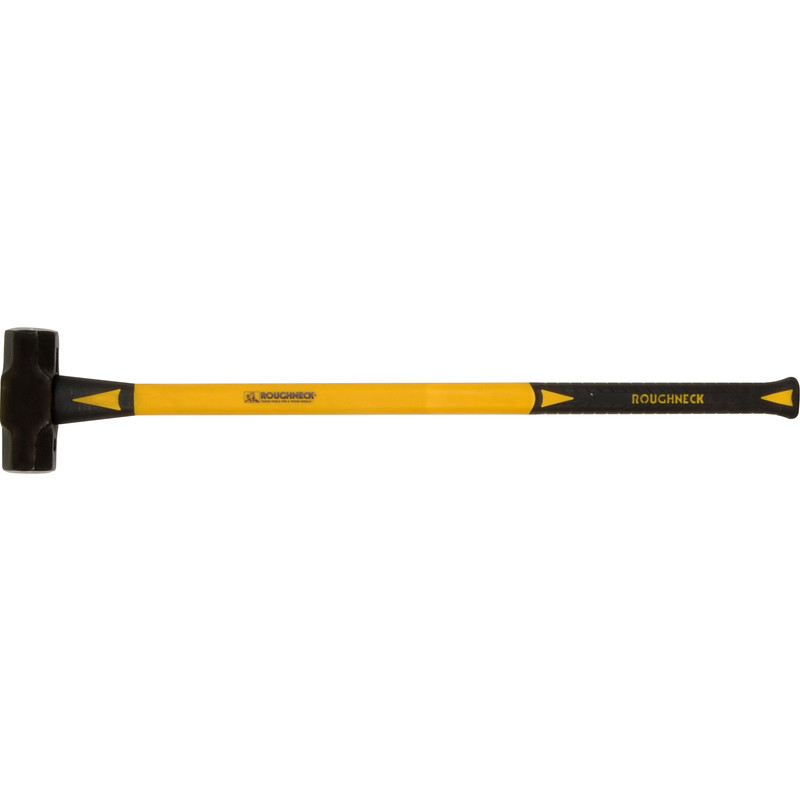
Sledgehammers
Sledgehammers have flat heads on both sides, designed for heavy-duty tasks like demolition and masonry work such as breaking up concrete or brick. Their powerful striking force makes them indispensable for tasks that need a lot of power.
Sledgehammers are built to withstand heavy-duty work, and have durable handles and reinforced heads to break through whatever is in your way. Sledgehammers come in various sizes and weights, so you can not only select the right one for the specific job at hand, but also for your personal preferences.
Despite their power, sledgehammers lack precision, so they’re unsuitable for tasks requiring delicate control. Their size and weight can make them more difficult to handle, especially in tight spaces. After a while, using a sledgehammer can be tiring and uncomfortable due to their weight and the vibrations that can be felt in the handle. Work gloves can increase comfort on long, tiring jobs.
Advantages
-
Perfect for heavy-duty work
-
Various sizes and weights available
-
Powerful striking force
Things to Consider
-
Less suited for tasks that need delicate control
-
Size and weight makes them harder to handle
-
Safety gloves recommended to reduce fatigue and discomfort
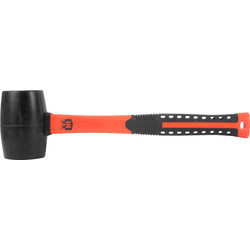
Mallets
Mallets are specialised hammers designed to deliver controlled, non-marking blows – meaning they’re not designed for demolition. They come in various materials such as rubber, wood, and plastic, each suited for different materials, surfaces and tasks. Mallets are commonly used in woodworking, where they help drive chisels and assemble delicate pieces without damaging the wood.
Mallets have several advantages, namely that they’re specially designed to not damage the material, allowing for controlled blows without leaving marks. You’ll find mallets with a range of different head materials, so there’ll always be something for your specific project. Mallets, while they look like small sledgehammers, are perfect for precise work.
However, mallets have a limited striking force, so they’re less suited for heavy-duty tasks that need a lot of force. They are designed for tasks that need precision, limiting their range of applications. Choosing the right mallet material is crucial, as using a hard mallet on a delicate surface could lead to unintended damage.
Advantages
-
Controlled blows without damaging the material
-
Range of head materials for a range of woodworking projects
-
Ideal for precise work
Things to Consider
-
Less suited to heavy-duty tasks
-
Choosing the wrong mallet material could cause damage
-
Limited striking force
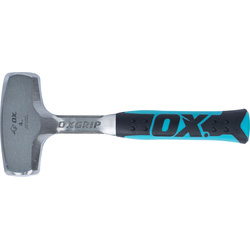
Club Hammers
Club hammers have short handles and flat heads, designed for one-handed use in tasks that need precision, control and power. They’re used for light demolition work and driving nails and other fixings into masonry.
Club hammers offer specific advantages, namely maintaining control and precision when being used one-handed due to their compact size. Their head size also means they can drive heavy-duty fixings and can still be used in confined spaces where larger hammers may struggle.
However, club hammers have less striking force compared to larger hammers like sledgehammers. They are best suited for tasks like light demolition and cold chiselling, rather than general-purpose hammering or heavy-duty demolition.
Advantages
-
Controlled and precise
-
Designed to be used one-handed
-
Compact size means they’re ideal for confined spaces
Things to Consider
-
Less force compared to larger hammers
-
Limited applications – not ideal for heavy-duty tasks
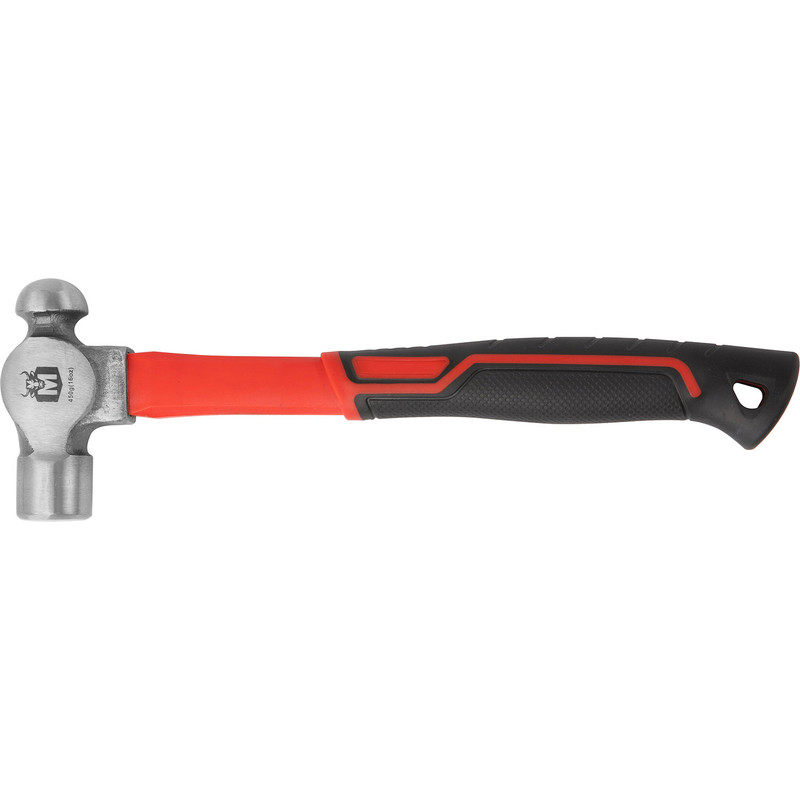
Ball Pein Hammers
Ball pein hammers, also known as machinist or ball peen hammers, are commonly used in metalworking and have one flat and one rounded face. The round face of the hammer concentrates the force to increase precision and power when shaping metal, while the flat face is ideal for chiselling.
You’ll find ball pein hammers are versatile tools with a wide range of applications in metalworking, engineering and blacksmithing. They are the best hammer type for use on metal and are also designed to be harder and more resilient than other hammers.
However, ball pein hammers are not designed for driving or removing nails, so they’re not suited for every striking task. They are specialised tools for metalworking and may not be suitable for general woodworking or hammering. Ball pein hammers are also not intended for demolition projects like breaking through masonry.
Advantages
-
Best hammer for metalworking and blacksmithing
-
Harder and more resilient than many other hammers
Things to Consider
-
Limited applications
-
Not suited for removing or driving in nails
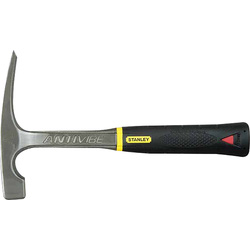
Brick Hammers
Brick hammers are designed for bricklaying and masonry work and have one flat side and one chisel-shaped side for splitting bricks, chipping stone, and scraping cement. They come in a range of weights and have strong, hardwearing steel or heat-treated carbon steel heads – the latter being slightly stronger because of the added carbon.
Brick hammers offer many advantages, such as their specialised design for cleanly and efficiently splitting bricks and chipping stone. They’re precise when working with stone, brick and aggregate surfaces. Additionally, brick hammers are built to withstand heavy use in demanding masonry applications.
However, brick hammers have limited versatility and are mainly designed for masonry work. They may not be suitable for tasks beyond these specialised applications. Brick hammers are not designed for driving nails into surfaces, which limits them when it comes to use in woodworking or construction projects.
Advantages
-
Cleanly and efficiently work with masonry
-
Built to withstand heavy duty use
Things to Consider
-
Limited use beyond masonry work

Slaters Hammers
Slaters hammers are made of one piece of crucible-cast steel and are for projects that use and make slate tiles. At one end they have a sharp point for punching holes in slate and a claw for removing nails, while the other end is flat for general hammering jobs. The edge of the head is sharp for cutting slate. These hammers are ideal for roofing tasks, including fixing, cutting and shaping roofing materials.
Slaters hammers have a dual-sided design, with one side for cutting and the other for nailing and fastening. Slaters hammers are built to withstand the demands of roofing work whilst being lightweight to safely use when up high.
These hammers are designed for roofing tasks using slate, so they’re less suited for general hammering needs. Slaters hammers may also be less commonly available compared to more typical hammer types like claw hammers. Due to their specific design, slaters hammers may not be versatile enough for tasks beyond slate roofing.
Advantages
-
Dual side design for different uses
-
Withstand demands of roofing work
-
Lightweight
Things to Consider
-
Less suited for general hammering needs
-
Not as widely available as other types of hammers
-
Limited versatility beyond slate roofing
Key Hammer Features
Claw Shape
Curved claw hammers are ideal for leverage and removing nails. Straight claw hammers also remove nails but can be used to pry apart pieces of wood that have been nailed together.
Side Puller
Some claw hammers feature a side puller which can remove particularly stubborn nails, especially in tight spaces.
Magnetic Nail Holder
Hammers with magnetic nail holders, including some claw hammers, are ideal for driving nails while keeping one hand free. The flat head of the hammer helps keep the nail steady so it can be cleanly driven into the material.
Replaceable Parts
Hammers with replaceable parts are much easier to maintain ensuring you will be able to use your favourite hammer for many years, even if parts get damaged.
Milled and Smooth Heads
Some hammers have a striking face that has a waffle-like texture ensuring nails are less likely to slip when hammering them in. However, most hammers will have a smooth head for a cleaner finish with less grip on the nail.
Handle Material
A wooden handle is lightweight and doesn’t vibrate much so it’s comfortable to use – especially on long jobs. Fibreglass handles are heavier, but perfect if you’re working around electricity as they’re non-conductive. Steel is even heavier and vibrates more, but are very strong – so steel handle hammers are ideal for heavy-duty use.
Head Weight
Choose a lighter head for overhead work or prolonged use, or a heavier head when more power is needed or infrequent use. Remember, a quick swing with a lighter hammer is often more effective than a slow swing with a heavy one.

